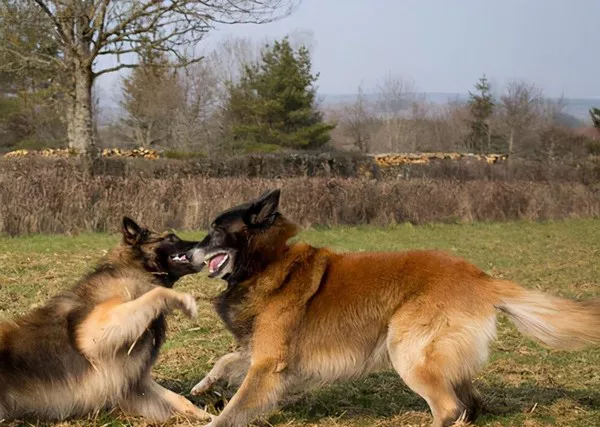The Alaskan Klee Kai is a relatively new and unique breed of dog that has become increasingly popular due to its resemblance to the Siberian Husky. Known for their striking appearance and energetic nature, the Alaskan Klee Kai is often praised for being a compact version of the Husky, but does this mean that they share the same temperament? One common question that potential owners ask is whether an Alaskan Klee Kai can be left alone. This question touches on a range of factors including the dog’s temperament, exercise needs, and ability to adapt to being left in a home environment without constant human interaction.
In this article, we will explore the Alaskan Klee Kai’s personality traits, exercise requirements, and behavioral tendencies to help you determine whether this breed is suitable for being left alone for extended periods of time. We will also discuss practical tips for owners who may need to leave their Klee Kai at home during work or other commitments.
Understanding the Alaskan Klee Kai
Before answering the question of whether Alaskan Klee Kai can be left alone, it’s important to understand the breed itself. The Alaskan Klee Kai was developed in the 1980s in Alaska by Linda Spurlin, who sought to create a smaller version of the Siberian Husky. The breed was initially intended to be a companion dog with the same striking appearance as its larger relatives but better suited for apartment living and smaller homes.
There are three size variations of the Alaskan Klee Kai:
Toy: 13-15 inches tall at the shoulder.
Miniature: 15-17 inches tall at the shoulder.
Standard: 17-20 inches tall at the shoulder.
Despite their size differences, all Alaskan Klee Kai share similar physical characteristics, such as a thick double coat, erect triangular ears, and a curled tail, which all give them an appearance strikingly similar to that of the Siberian Husky.
Temperament and Personality
The temperament of the Alaskan Klee Kai plays a significant role in whether it can be left alone. Like many companion breeds, the Klee Kai has a personality that thrives on human interaction. However, they also have an independent streak, which can sometimes make them more adaptable to being left alone for short periods of time.
Here are some key personality traits that shape the Alaskan Klee Kai’s behavior:
1. Affectionate but Independent
Alaskan Klee Kais are affectionate with their family members, forming strong bonds with their owners. However, they are also known for their independence. This means that while they enjoy attention and interaction, they can be content with their own company for short periods, especially if they have toys or other forms of entertainment.
2. Highly Intelligent
The Alaskan Klee Kai is an intelligent breed, which can work in both positive and negative ways when it comes to being left alone. On the positive side, this intelligence means they can quickly learn to adapt to a routine and recognize when it’s time for their owner to leave and return. On the negative side, their intelligence also means they can get bored easily if not given proper stimulation. An intelligent dog that is left alone with nothing to do can quickly develop destructive behaviors out of boredom.
3. Social and Playful
Despite their independent streak, Alaskan Klee Kais are social dogs that enjoy being around people and other dogs. They thrive on companionship and tend to bond strongly with their human family. If they are left alone for too long, they can become anxious and exhibit signs of separation anxiety.
4. Vocal Nature
Another important characteristic of the Alaskan Klee Kai is that they are quite vocal. They have a tendency to bark, whine, or “talk” to express their feelings. If they are left alone for too long, this vocalization can become more frequent, which could be problematic for neighbors or anyone within earshot.
5. Reserved with Strangers
The Alaskan Klee Kai is typically reserved and cautious around strangers. This breed tends to bond closely with their family members but may take some time to warm up to new people or situations. This characteristic does not necessarily impact their ability to be left alone, but it is something to consider when socializing your Klee Kai.
Exercise Requirements
The Alaskan Klee Kai is an active and energetic dog, though not as high-energy as its larger Husky relatives. It requires daily exercise to keep its body and mind healthy. While they do not require the same amount of exercise as a Siberian Husky, they still need a sufficient amount of physical and mental stimulation to stay happy and well-behaved.
If you plan to leave your Alaskan Klee Kai alone, it is important to ensure that they are sufficiently exercised before you go. A Klee Kai that has not had enough physical activity may become restless, destructive, or exhibit unwanted behavior such as excessive barking.
Here are some exercise requirements to consider for an Alaskan Klee Kai:
Daily Walks: A 30 to 60-minute walk each day is essential to help expend some of their energy.
Playtime: In addition to walks, interactive playtime, such as fetch or tug-of-war, will help burn off excess energy.
Mental Stimulation: Puzzle toys, treat-dispensing toys, and training exercises are helpful for keeping your Klee Kai mentally engaged.
An Alaskan Klee Kai that has had its daily exercise will be more likely to relax when left alone for a few hours. However, a dog that has not had enough physical and mental stimulation may resort to destructive behaviors as a way to release pent-up energy.
Separation Anxiety in Alaskan Klee Kai
Separation anxiety is a common issue in many companion dog breeds, and the Alaskan Klee Kai is no exception. While some Klee Kais may be more independent and able to tolerate being left alone for longer periods, others may develop anxiety when separated from their owners.
Signs of separation anxiety in Alaskan Klee Kais can include:
- Excessive barking or howling.
- Destructive behavior, such as chewing furniture or doors.
- Attempting to escape from crates or confined spaces.
- House soiling (urinating or defecating indoors).
- Drooling or pacing.
Separation anxiety is typically caused by a dog’s strong attachment to its owners. The Alaskan Klee Kai’s social nature makes it particularly prone to this condition if left alone for long periods. If you notice signs of separation anxiety in your Klee Kai, it is important to address it immediately through training and behavior modification techniques.
Can Alaskan Klee Kai Be Left Alone?
So, can Alaskan Klee Kai be left alone? The answer is not a simple yes or no, as it depends on various factors including the dog’s personality, age, and training. Generally speaking, Alaskan Klee Kais can tolerate being left alone for short periods of time (e.g., a few hours) but should not be left alone for extended hours each day.
Factors to Consider:
Age: A young Alaskan Klee Kai puppy will require more attention and care than an adult. Puppies are more prone to separation anxiety and may not have developed the ability to entertain themselves for long periods. Adult Klee Kais are usually more independent and capable of being left alone for longer stretches.
Training: Proper training is key to ensuring that your Klee Kai can be left alone without developing behavioral issues. Gradually increasing the time they are left alone, starting from short periods and gradually extending the duration, can help them adapt to being by themselves.
Mental and Physical Stimulation: As mentioned, an Alaskan Klee Kai needs both physical and mental exercise. If they are left alone without enough to do, they may become anxious or destructive. Providing puzzle toys, interactive feeders, or even a doggy camera to monitor their activity can help alleviate boredom.
Environment: The environment in which your Alaskan Klee Kai is left alone plays a role in how well they cope. If they are left in a confined space like a crate, they may become more anxious. Ideally, they should be given access to a comfortable space with their toys and bedding where they can relax and feel secure.
Practical Tips for Leaving an Alaskan Klee Kai Alone:
Provide a Safe Space: Set up a designated area where your Klee Kai feels secure, such as a playpen or dog-proofed room.
Exercise Before Leaving: Ensure that your dog gets enough physical exercise before you leave, so they are more likely to rest while you’re gone.
Leave Interactive Toys: Provide toys that can stimulate their mind and keep them entertained. Treat-dispensing toys and puzzles are excellent choices.
Gradual Absences: Start by leaving your Klee Kai alone for short periods and gradually increase the duration. This will help them become accustomed to your absences.
Routine: Stick to a consistent daily routine so your dog knows when to expect your departures and returns.
Conclusion
In summary, the Alaskan Klee Kai can be left alone, but it depends on the individual dog and how well they are trained to cope with separation. These dogs are intelligent, social, and affectionate, but they also have an independent streak. They can handle short periods alone, especially if they are properly exercised and mentally stimulated beforehand. However, for extended periods of time, they may experience separation anxiety, which could lead to unwanted behavior.
If you are considering getting an Alaskan Klee Kai and need to leave them alone during the day, it’s important to evaluate their exercise needs, provide mental stimulation, and train them to be comfortable with your departures. With the right preparation, an Alaskan Klee Kai can be left alone for a few hours at a time, but they are not suited for a life of prolonged solitude. If you work long hours or have a busy schedule, you may want to consider additional solutions, such as hiring a dog walker or having a pet sitter visit during the day.
Related Topics:




















